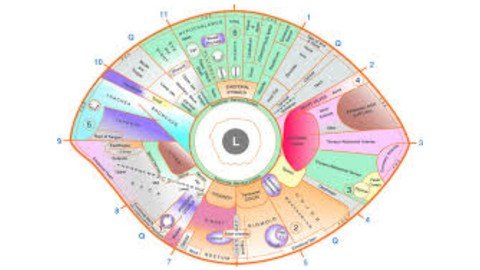Iridology - Using Sub-Types To Determine Health Status
"softddl.org"
14-09-2022, 15:02
-
Share on social networks:
-
Download for free: Iridology -
-

Published 8/2022
MP4 | Video: h264, 1280x720 | Audio: AAC, 44.1 KHz
Language: English | Size: 476.21 MB | Duration: 1h 6m

Published 8/2022
MP4 | Video: h264, 1280x720 | Audio: AAC, 44.1 KHz
Language: English | Size: 476.21 MB | Duration: 1h 6m
Let's learn about sub-types
What you'll learn
Learn the language of iridology positions to help better identify what's happening it the body.
Learn more detailed information about what information can be found in the 7 iris zones.
Learn the 4 genetic lymphatic subtypes and how to identify clients who have the potential for certain conditions.
Learn the 2 genetic biliary subtypes and how to identify clients who have the potential for certain conditions.
Learn the genetic hematogenic subtype and how to identify clients who have the potential for certain conditions.
Learn the 4 structural subtypes and how to easily identify this in any person's eyes you look into.
Requirements
Students should complete my Intro to Iridology course prior to taking this class or have a working knowledge of iridology language and concepts.
Description
More Iridology part 2 is a follow-up to my Intro to Iridology course found here on Udemy. In this course, we will take an in-depth look at iris positions with an emphasis on the universal language that iridologist use. Iris positions help provide insight into where iris markings and pigments are positioned. We will also learn simple techniques to distinguish the right eye from the left eye as this information is important to locating reaction fields. We will also continue our discussion on the iris zones. We will look at each individual iris zone and analyze the exact information we can gather from each zone. We will also look at iris constitution sub-types based on color - lymphatic eye, biliary eye, and hematogenic eye. There are seven sub-types based on color. Each sub-type has unique characteristics that give us insight into the potential health tendencies our clients are predisposed to. We will begin to examine some basic suggestions for supporting our client's health. We will also learn how to identify iris constitutions based on physical integrity and be introduced to what each sub-type needs to achieve better health.We will also take an in-depth look at what iridology can and cannot determine.
Overview
Section 1: Introduction
Lecture 1 Introduction
Section 2: Iris Positions
Lecture 2 Iris Positions
Lecture 3 More about iris zones
Section 3: Iris sub-types based on color
Lecture 4 Lymphatic Sub-types
Lecture 5 Biliary Iris Sub-types
Lecture 6 Hematogenic Iris Sub-types
Section 4: Iris types based on structure
Lecture 7 Structure Sub-types
Section 5: What can iridology determine?
Lecture 8 What can iridology do?
Section 6: Conclusion
Lecture 9 Suggested books
Lecture 10 Determining Left and Right Irises. What to expect in class #3.
For beginning iridology students or those looking to gain a better understanding or iridology.
Homepage
https://www.udemy.com/course/more-iridology-class-2/
https://rapidgator.net/file/cecd62279081b9169abc70b33a44c8f3/wxzni.Iridology..Using.SubTypes.To.Determine.Health.Status.rar.html

https://uploadgig.com/file/download/a721cE066cD70e0D/wxzni.Iridology..Using.SubTypes.To.Determine.Health.Status.rar

https://nitroflare.com/view/007A3E1D451A810/wxzni.Iridology..Using.SubTypes.To.Determine.Health.Status.rar
Links are Interchangeable - No Password - Single Extraction
The minimum comment length is 50 characters. comments are moderated





